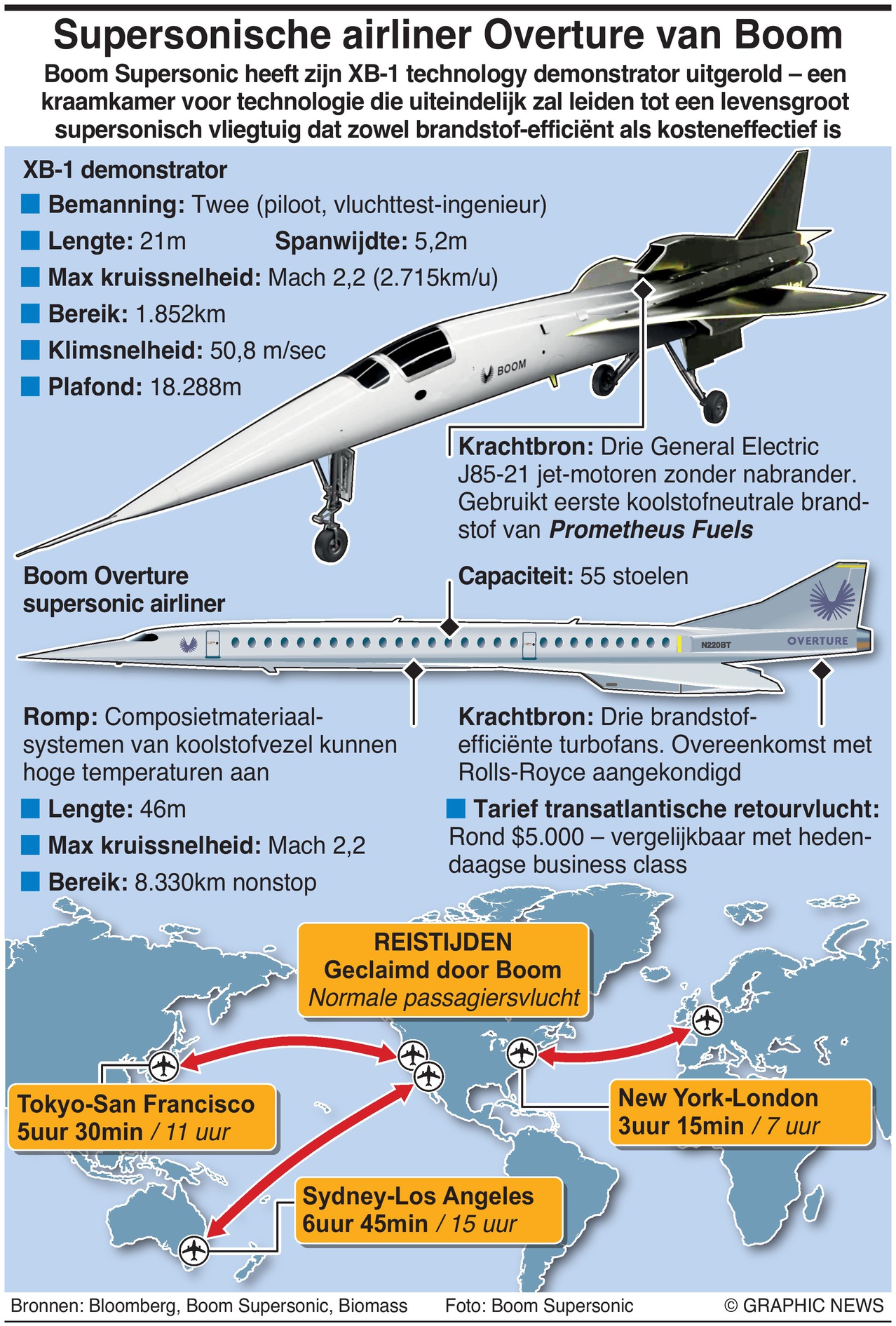BY DUNCAN MIL
Boom Supersonic will roll out its XB-1 technology demonstrator at 17:00GMT Wednesday. The XB-1 is a testbed for technology that will eventually lead to a full-scale supersonic airliner that is both fuel-efficient and cost-effective.
The Franco-British Concorde flew faster than any commercial aircraft in operation today and it has been five decades since the first Concorde aircraft took to the skies. During that time, aerospace engineering has advanced with a speed that would inspire Concorde’s engineers and designers.
Now, a Colorado startup called Boom Supersonic wants to enable travellers to break the sound barrier again.
On Wednesday (October 7), Boom has taken another step in that direction unveiling its XB-1 demonstrator, a scale prototype of its planned supersonic airliner, dubbed Overture.
Built out of carbon fibre, the sleek white and black craft resembles a fighter jet more than a mode of passenger transport. The 21-metre-long XB-1 will start making its first flights early next year, reaching a speed of Mach 1.3 (1,600km/h) before going to its target cruise speed of Mach 2.2 (2,715km/h).
First announced at the 2017 Paris Air Show, the Overture aims to be cheaper to operate than the Concorde, while being cleaner — Boom says 100% carbon neutral. The XB-1’s three General Electric J85-21 engines will use ethanol-to-jet-fuel produced by Prometheus Fuels, using a process developed by the U.S. Department of Energy’s Oak Ridge National Laboratory.
“With XB-1, we’re demonstrating that we are prepared to bring back supersonic,” Boom CEO Blake Scholl said in a statement about Wednesday’s rollout. “We’re ensuring that the supersonic future is safe and environmentally and economically sustainable.”
Based outside Denver, Boom, which has raised $160 million, recently announced an engagement agreement with Rolls-Royce Holdings Plc in matching their turbofan engines to Overture.




